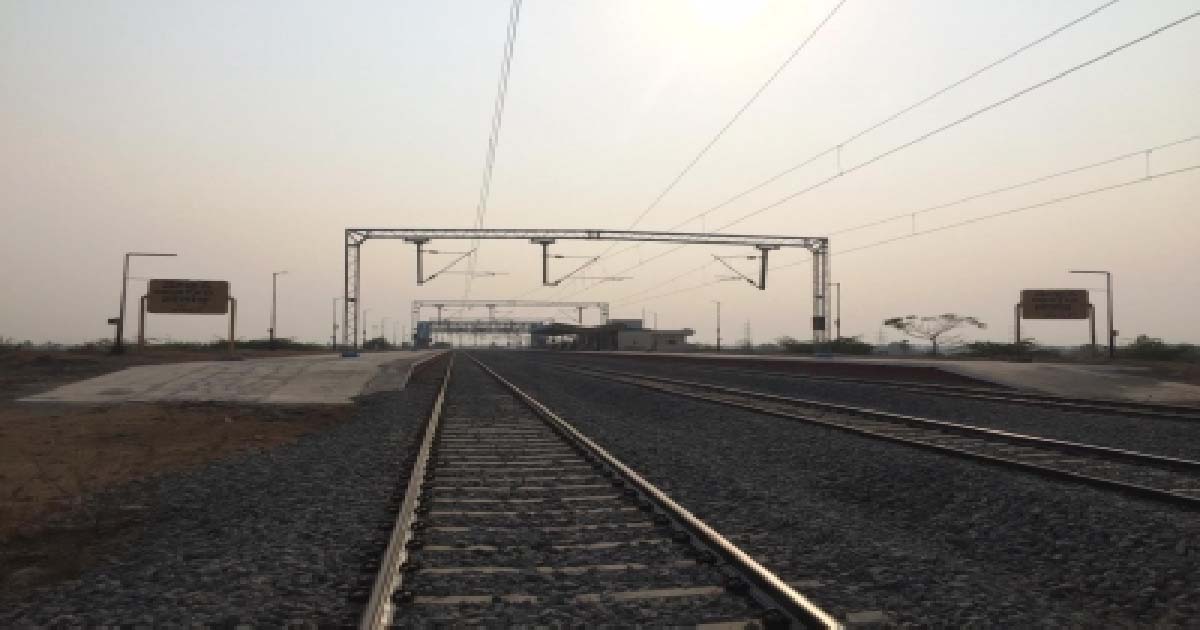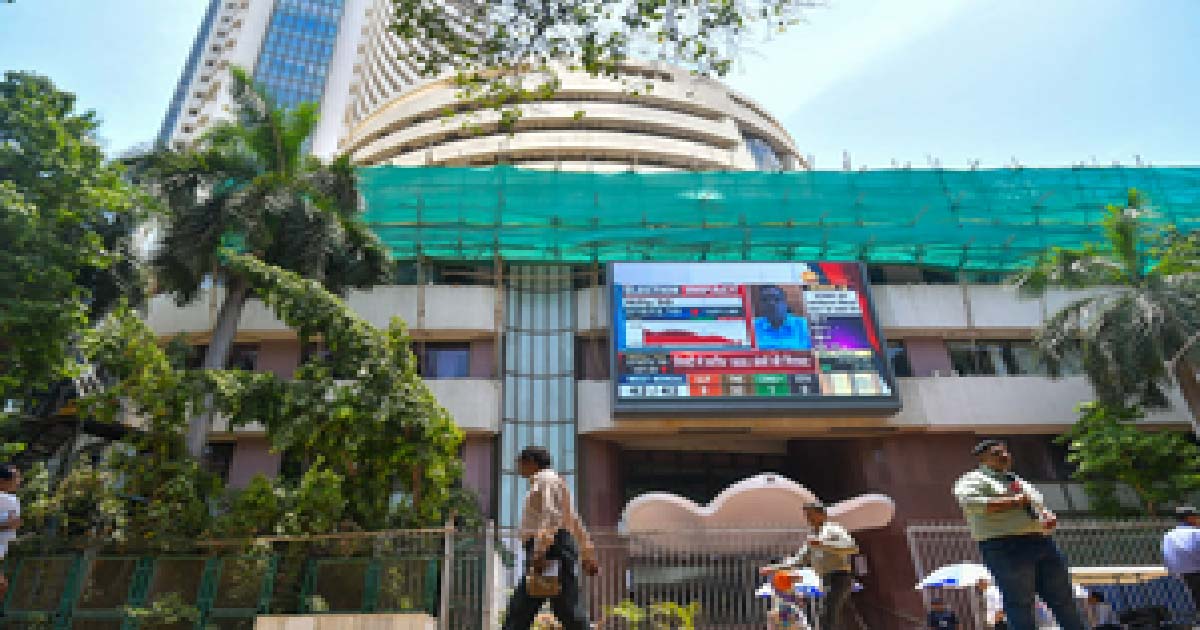Business
NHAI to be flag-bearer of Centre’s asset monetisation plan

The National Highways Authority of India (NHAI) will be the flag-bearer of the government’s asset monetisation programme with a plan to raise about Rs 30-40,000 crore through monetisation of its operational stretches over the next two years.
The company officials indicated that the disruptions in wake of pandemic delayed some of its asset monetisation plan, but with traffic fast returning to near normal levels now, about Rs 10,000 crore of road assets would be monetised by NHAI in the current year (FY 22) and the exercise would kick up pace next year with doubling or tripling of the numbers in the next few years.
With the country in firm grip of the second wave of Covid pandemic in the months of April and May, and subsequent restrictions on mobility and partial lockdown, tolling at national highways nose-dived. In a report released earlier, rating agency ICRA had estimated that sequentially tolling had fallen by about 10 per cent in April and close to 30 per cent in May. Thereafter, there has been marked improvement in traffic on highways reaching 90 per cent of pre-Covid levels and has crossed that level too now.
An NHAI official said that the entity is in touch with a clutch of investors and soon bids would be invited for taking the operational NHAI project under the toll-operate-transfer (TOT) model.
Under the TOT model, highway projects which have been operational for at least two years, and which have been generating a steady stream of revenue, are to be leased out to large-cap investors for carrying out O&M (operation and maintenance) operations in consideration of the highest bid upfront concession fee. The investor recovers investment through tolls collected for a stretch over a period of concession spreading over 20-30 years. Once the cost with agreed return is achieved, the road returns back to NHAI.
“The national monetisation pipeline announced by the government has identified the road sector having the maximum potential for such exercise at Rs 1,60,000 crore over the next four financial years. This would be achievable given the tested model already available in the sector. Besides, InvIT model would also be used to pool resources and monetise projects,” said a road sector expert asking not to be named.
NHAI has planned an InvIT, the second one promoted by a public sector entity after power transmission utility PGCIL, but it has seen multiple deferments over the Covid disruptions. But a Rs 5,100 crore InvIT is now likely next month.
The InvIT trust will acquire 100 per cent of the equity shares of the project SPV from the sponsor NHAI. It is expected that NHAI may raise further funds, around Rs 5,000 crore, by transferring more assets to the InvIT later in the year.
But TOT may remain the most active model for monetisation. So far NHAI has raised around Rs 17,000 crore through the TOT model by granting on long-term lease three road bundles out of the five attempted so far. The sixth bundle will be out soon.
Another exercise for asset monetisation by NHAI will be through toll securitisation where the authority gets paid for investment in road construction and private investor gets to collect toll.
Proceeds from the asset monetisation programme are used to repay debt and develop highways. As on March, 2021, NHAI had around Rs 3 lakh crore debt. It is permitted to borrow Rs 65,000 crore in 2021-22, same as in 2020-21.
The expectation of asset monetisation (by NHAI and other developers including EPC developers) is also supported by the past performance of road EPC companies. Between fiscals 2016 and 2021, sale of assets to InvITs or to private equity funds helped unlock Rs 80,000 crore of enterprise value for the sector (Rs 50,000 crore for the road EPC companies analysed), according to a Crisil report. Around 60% of this was through four InvITs. The funds released strengthened their balance sheets.
The leverage (calculated as total outside liabilities to tangible net worth) of these companies is estimated to have improved to 1.25 times as on March 31, 2021, from 1.87 times as on March 31, 2016, largely supported by asset monetisation.
The Union Budget 2021-22, laid a lot of emphasis on asset monetisation as a means to raise innovative and alternative financing for infrastructure. In her Budget speech, Finance Minister Nirmala Sitharaman had said that monetising operating public infrastructure assets was a very important financing option for new infrastructure construction. Now a Rs 6 lakh crore monetisation pipeline has been announced for bringing in private investment in brownfield Central government projects in various sectors where assets are idling.
Business
38 Railways projects worth Rs 89,780 crore sanctioned in Maharashtra: Centre

New Delhi, Dec 20: A total of 38 railway projects (11 new lines, 2 gauge conversion and 25 doubling) of a total length of 5,098 kms and costing Rs 89,780 crore have been sanctioned in Maharashtra (as on April 1, 2025), the government said on Saturday.
During the last three fiscals — 2022-23, 2023-24, 2024-25 and the current financial year 2025-26 — 98 surveys (29 New Line, 2 Gauge Conversion and 67 Doubling) of total length 8,603 km falling fully/partly in the state of Maharashtra, have been sanctioned, it said.
“Further, construction works on the flagship High-Speed Bullet Train project have gathered momentum in Maharashtra. Now 100 per cent of land acquisition has been completed. Works on bridges, aqueducts, etc. have been taken up,” the Railways Ministry said in a statement.
In addition, platform extension work at 34 stations to accommodate 15-car EMUs has been taken up.
To improve the capacity of the rail network in the Mumbai suburban area, the Mumbai Urban Transport Project (MUTP)-II costing Rs 8,087 crore, MUTP-III costing Rs 10,947 crore, and MUTP-IIIA costing Rs 33,690 crore have been sanctioned.
To enhance passenger carrying capacity, 238 rakes of 12 cars each with doors have been sanctioned under MUTP-III and IIIA at a cost of Rs 19,293 crore. The process for the procurement of these rakes has been taken up.
With Western DFC also passing through Maharashtra, as about 178 route km of it or about 12 per cent of the overall route length, falling in the state, the ministry said that “about 76 km of this project from New Gholvad to New Vaitarna in Maharashtra has already been commissioned. Balance works have been taken up. Connectivity of WDFC to JNPT will boost the capacity to handle cargo and container traffic from the port to Delhi NCR”.
Presently, about 120 originating Mail/Express trains and about 3,200 suburban trains are handled daily in the Mumbai area.
Business
Indian indices end week in bullish tone over positive global cues

Mumbai, Dec 20: Indian equity benchmarks closed on a strong note this week, snapping a four-day losing streak amid positive global cues stemming from US inflation data.
The market ended the week in a bullish tone with Nifty surging 0.18 per cent during the week and 0.58 per cent on the last trading day to 25,966, after a softer US CPI print boosted expectations of a milder Fed stance.
At close, the Sensex was up 447.55 points or 0.53 per cent at 84,929.
Indian equities were traded in a cautious tone for most of the week, weighed down by persistent FII outflows, rupee depreciation, and heightened global uncertainties.
Further, early sessions also saw pressure from rising Japanese bond yields and expectations of Bank of Japan (BoJ) tightening, which amplified risk-off sentiment across emerging markets.
Bargain hunting and lower crude prices helped large caps drive a late rebound, trimming most of the week’s losses, market watchers said.
Broader indices also rose marginally during the week, with the Nifty Midcap100 up 0.04 per cent, while Nifty Smallcap100 was unchanged during the week. It gained 1.34 per cent at the close.
On the sectoral front, all sectors traded with a positive bias. Major contributions came from Nifty Realty, Auto, Healthcare, and Chemicals, while other sectors also posted modest gains.
Nifty has 26,200-26,300 as stiff resistance levels while 25,700–25,800 levels will act as support zone, they added.
Analysts said markets will likely maintain a cautiously positive bias in near future but remain highly sensitive to global cues.
Key drivers going forward include comments from the global central banks for the 2026 policy trajectory. While sentiment remains constructive, near-term volatility may persist amid uncertainty over trade deal timelines and the Indian rupee stability, they added.
Business
Nifty to touch 29,094 in 12 months supported by durable earnings, strong macro backdrop

New Delhi, Dec 19: India’s benchmark index Nifty is expected to touch 29,094 in one year based on long‑term valuation averages and earnings durability, a report said on Friday.
Wealth management firm PL Wealth said in the report that India enters the end of 2025 from a position of relative macro strength with record‑low inflation, a dovish monetary stance, resilient domestic demand and improved corporate earnings visibility.
“In the near term, large-cap stocks remain preferred due to their earnings stability and strong balance sheets, while selective exposure to high-quality mid-cap names is being added as visibility improves,” the wealth management firm cited its strategy.
Over the next 6 to 24 months, the earnings cycle is expected to broaden across consumption, financials, capex-linked sectors and select industrials, supported by benign inflation, lower interest rates and sustained domestic liquidity.
“India’s current macro configuration is among the most constructive we have seen in over a decade,” said Inderbir Singh Jolly, CEO, PL Wealth Management.
While global uncertainties will continue to create short-term volatility, India’s structural strengths—policy reform, financialisaton of savings and improving corporate balance sheets—position it well for sustained long-term growth, Inderbir added.
RBI’s 25 basis‑point cut to a 5.25 per cent policy repo rate lowered its CPI inflation projections and upgraded GDP growth estimates, signalling confidence in the sustainability of domestic demand, the report said.
The firm also noted FY26 GDP growth projection of 7.3 per cent underpinned by robust infrastructure spending, resilient consumption and key policy measures such as GST rationalisation and income-tax cuts.
The FY26 September quarter earnings season delivered broad-based strength, with several sectors—including hospitals, capital goods, cement, electronics manufacturing services, ports, NBFCs and telecom—reporting double-digit growth in EBITDA and profits.
The firm noted that Nifty earnings per share estimates for FY26–FY28 imply an earnings CAGR of nearly 14 per cent. Domestic institutional investors have anchored markets with record net inflows of over Rs 6.8 trillion year‑to‑date.
-

 Crime3 years ago
Crime3 years agoClass 10 student jumps to death in Jaipur
-

 Maharashtra1 year ago
Maharashtra1 year agoMumbai Local Train Update: Central Railway’s New Timetable Comes Into Effect; Check Full List Of Revised Timings & Stations
-

 Maharashtra1 year ago
Maharashtra1 year agoMumbai To Go Toll-Free Tonight! Maharashtra Govt Announces Complete Toll Waiver For Light Motor Vehicles At All 5 Entry Points Of City
-

 Maharashtra1 year ago
Maharashtra1 year agoFalse photo of Imtiaz Jaleel’s rally, exposing the fooling conspiracy
-

 National News1 year ago
National News1 year agoMinistry of Railways rolls out Special Drive 4.0 with focus on digitisation, cleanliness, inclusiveness and grievance redressal
-

 Maharashtra1 year ago
Maharashtra1 year agoMaharashtra Elections 2024: Mumbai Metro & BEST Services Extended Till Midnight On Voting Day
-

 National News1 year ago
National News1 year agoJ&K: 4 Jawans Killed, 28 Injured After Bus Carrying BSF Personnel For Poll Duty Falls Into Gorge In Budgam; Terrifying Visuals Surface
-

 Crime1 year ago
Crime1 year agoBaba Siddique Murder: Mumbai Police Unable To Get Lawrence Bishnoi Custody Due To Home Ministry Order, Says Report












